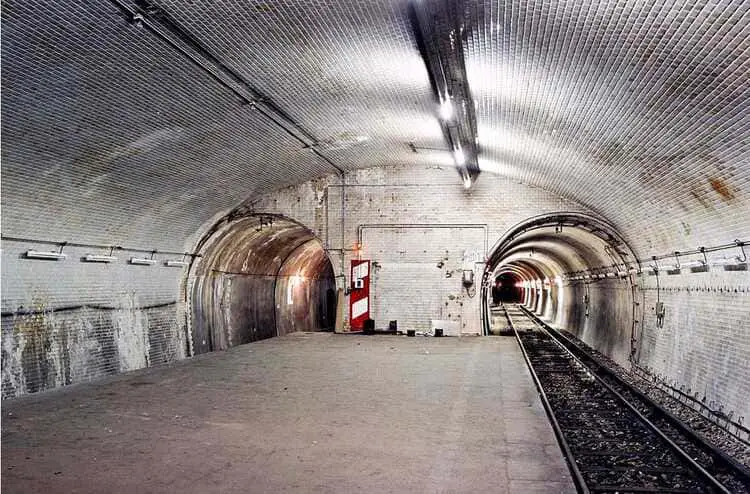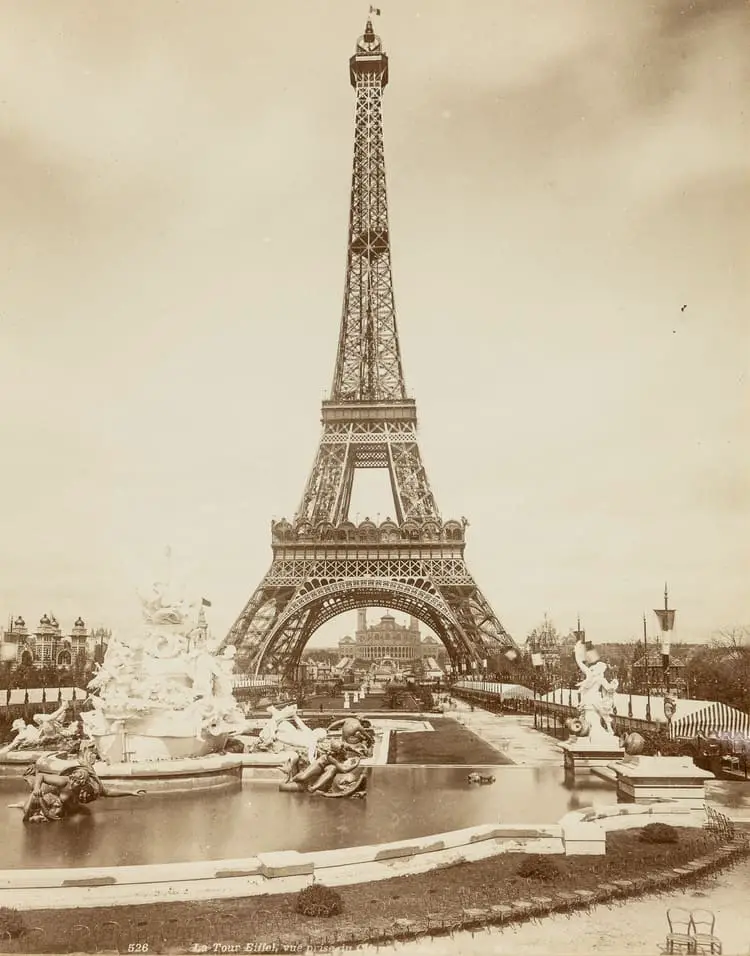The 1950s—a time of optimism, prosperity, and rapid advancement. It was the golden age of consumerism, where rising incomes made it possible for families to buy new appliances, like televisions, refrigerators, and, of course… cars!
Paris, during this period, transformed into a sprawling parking lot. Cars filled the streets of the city’s most famous landmarks, from Place de la Concorde to Palais Royal and along the Seine.
It’s a reminder that not everything about the past was as perfect as it may seem.
Quai de Conti, 1960

In the 1960s, cars were parked right by the river where people now walk.
That area is part of the Banks of the Seine, which became a UNESCO World Heritage Site in 1991.
The road built between 1961 and 1967 was closed to traffic in 2013, so people can now walk and bike along it thanks to a project called “Berges de Seine.”
Canal Saint-Martin, 1953
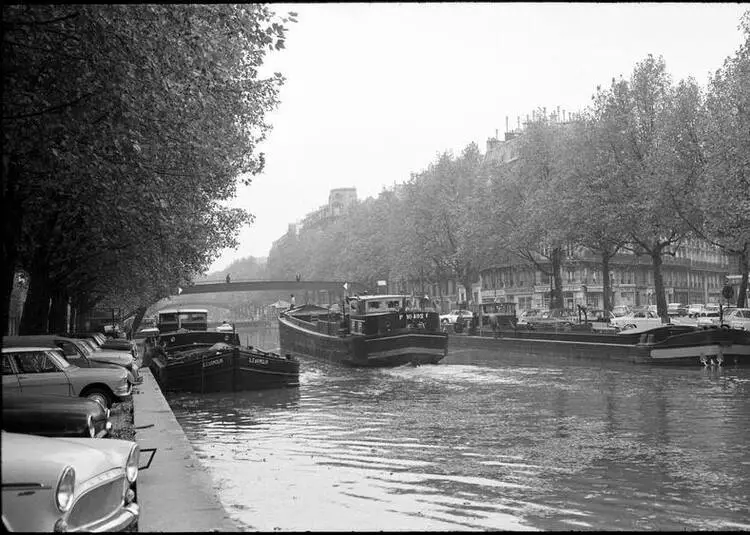
The path next to the canal used to be full of parked cars when there were still lots of factories nearby.
In 1983, the city rebuilt the area, added new paths, and restored the old footbridges.
Now it’s one of the best places for picnics in Paris.
Plateau Beaubourg, 1970
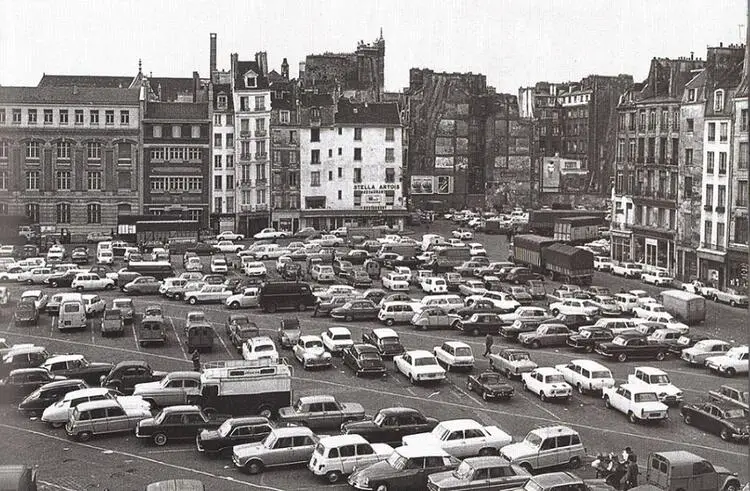
This whole area used to be just a big empty parking lot.
In 1971, President Pompidou held a contest to build something new here.
That’s how the Centre Pompidou was born in 1977, with its pipes and structure showing on the outside.
Cars were replaced by art and architecture!
Plateau Beaubourg, 1970
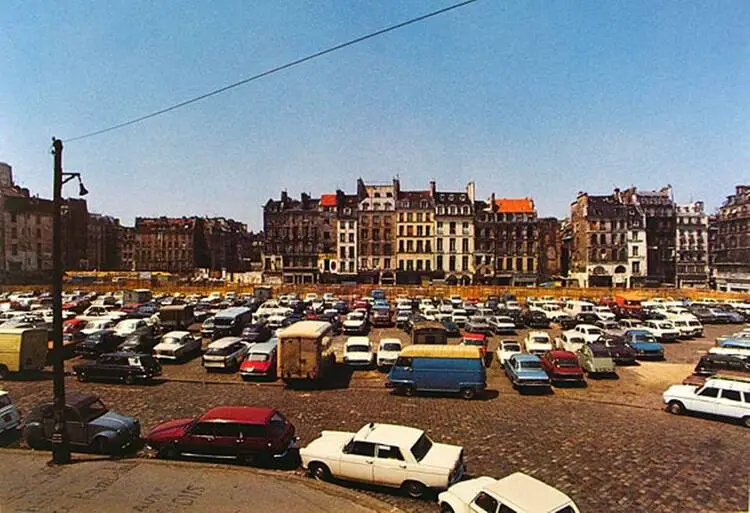
Gare d’Orsay, 1970
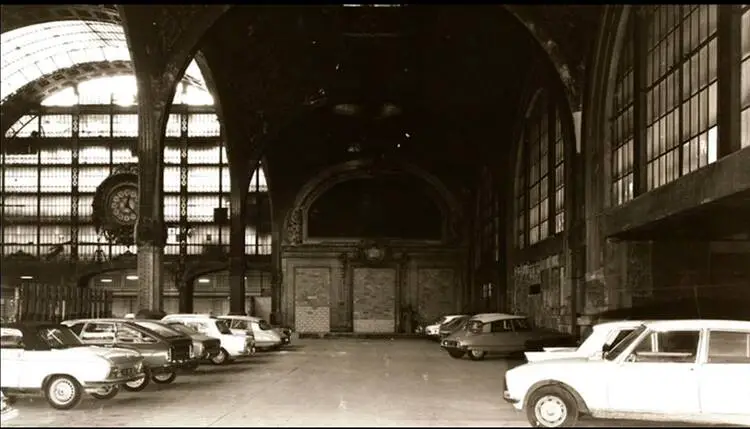
This train station, built in 1900, stopped running long-distance trains in 1939.
It was almost destroyed, but in 1977 it was saved. In 1986, it reopened as the Musée d’Orsay—a famous art museum.
So the building changed from parking lot to art museum!
Hôtel de Ville, 1960
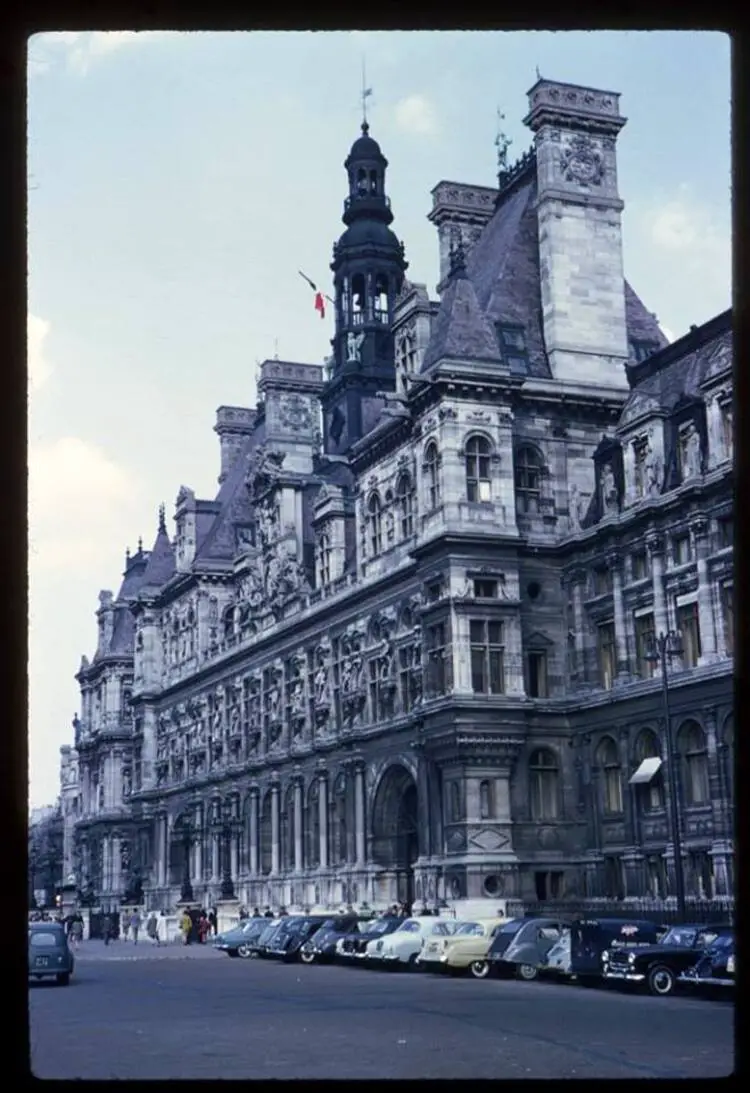
Until 1982, the big square in front of city hall had space for 500 cars.
Then Mayor Jacques Chirac turned it into a pedestrian plaza.
Today, it’s used for concerts, sports events, and even an ice-skating rink at Christmas.
Île de la Cité, 1962
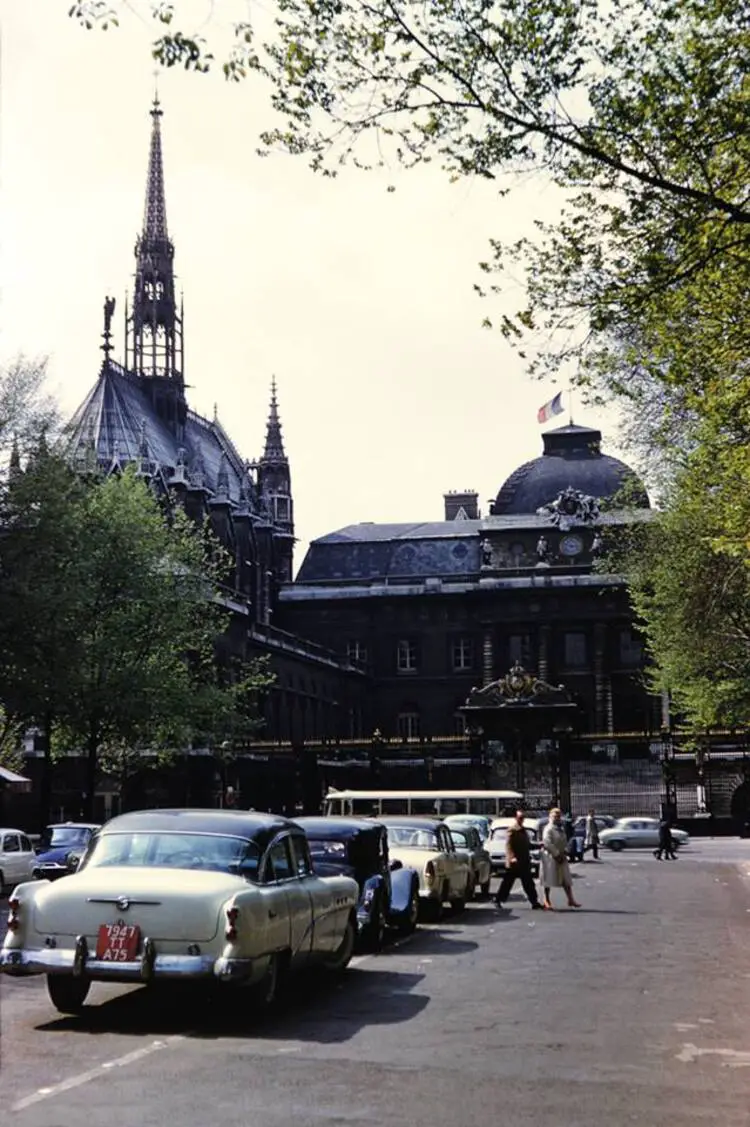
Cars pack the little square right in front of the huge Palais de Justice and the tall, stained-glass Sainte-Chapelle (finished in 1248).
These days the spot is closed to everyday traffic for security, so you’ll see police vans and queues of visitors instead of rows of bumpers.
Place de la Concorde, 1957
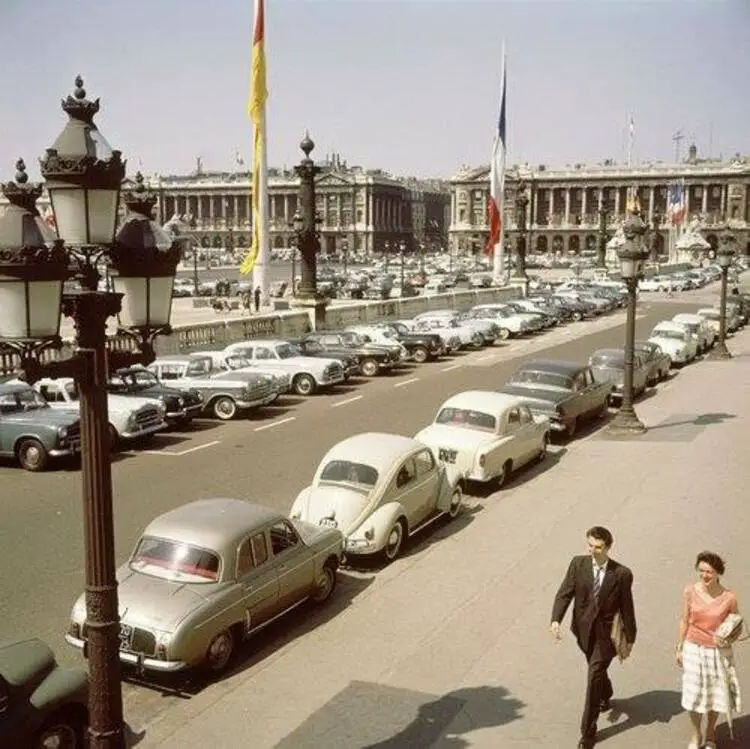
In the 1950s, this giant square looked more like a busy roundabout than a nice public space.
For the 2024 Olympics, the city closed it to traffic.
Now they’ve decided to keep at least half of it open for people walking or biking, making it feel more like part of the Tuileries garden next to it.
Place de la Concorde, 1958
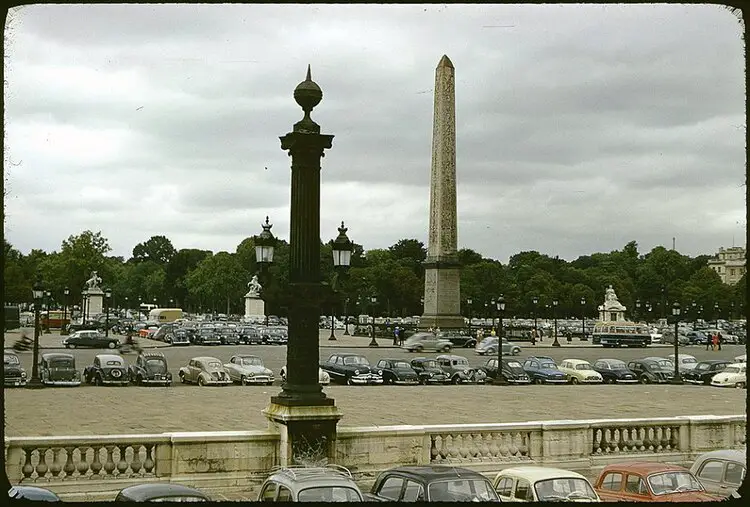
Place de la Concorde, 1958
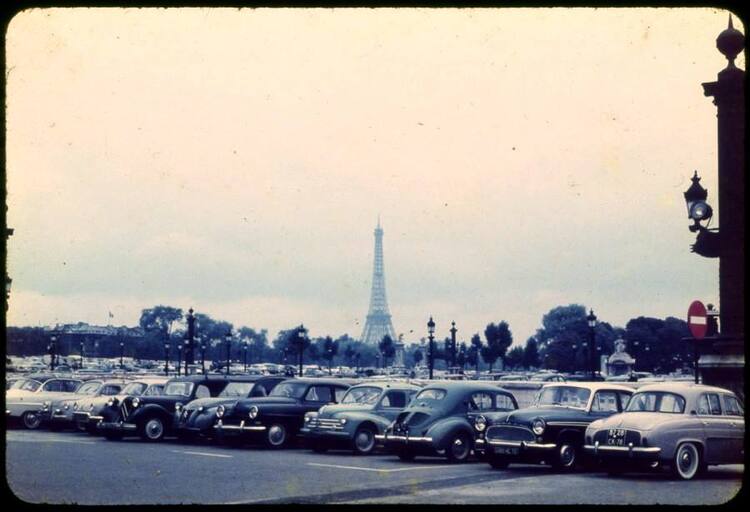
Quai des Grand Augustins, 1965

Back then, the whole riverside lane on the Left Bank was basically a giant parking lot.
In 2013, the city took the cars away and made it part of the 2.3-km “Berges de Seine” path where people now walk, bike, picnic and skate.
Place Vendôme, 1965
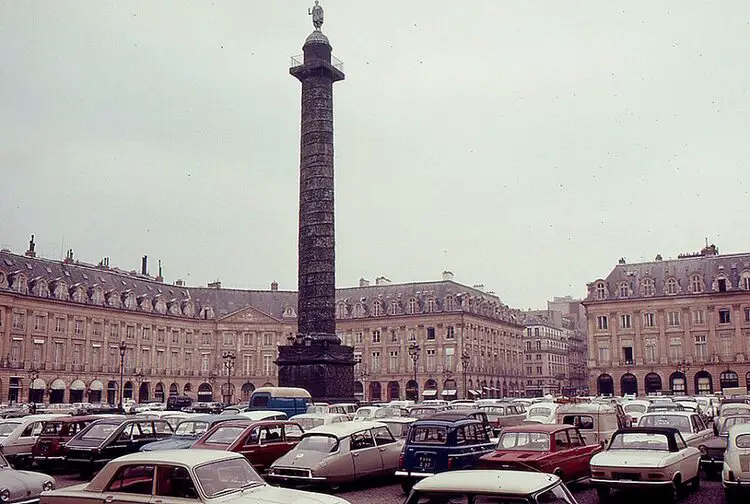
In the past, you could park almost right next to the famous column in the middle of the square.
In the 1990s, the city redid the whole surface with granite and removed most parking.
Now, only hotel drop-offs and official cars can go inside, so people can enjoy the square better.
Place Vendôme, 1961

Place des Vosges, 60’s
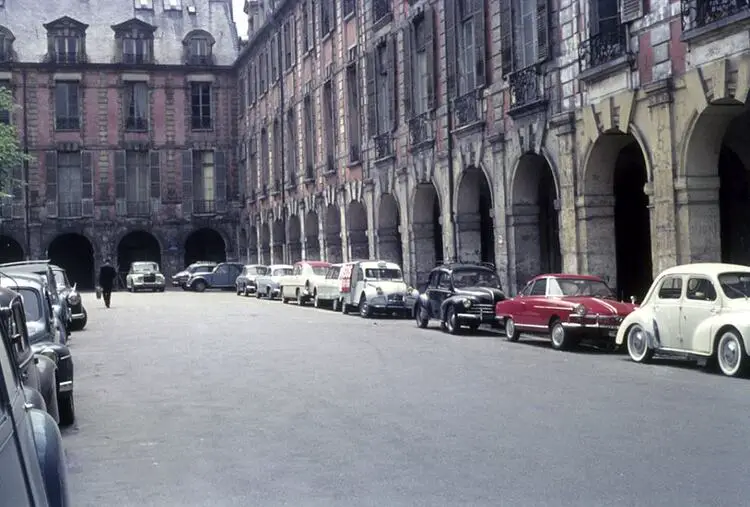
This beautiful square, built in the 1600s, once had cars parked under all its arches.
In the late 1980s, fences were added so no more cars could enter.
Now it’s perfect for relaxing or playing pétanque.
Le Louvre, 1958
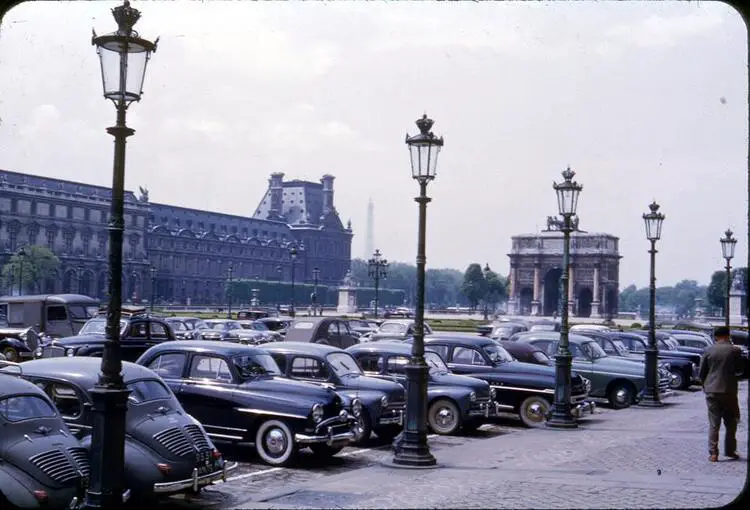
Back then, cars were parked all over the front courtyard of the Louvre Museum.
But in the 1980s, a big project changed everything. The Finance Ministry left, they dug a space under the museum, and built the famous glass pyramid on top.
Today, that courtyard is one of the most famous spots in Paris.
Place de la Bourse, 1970
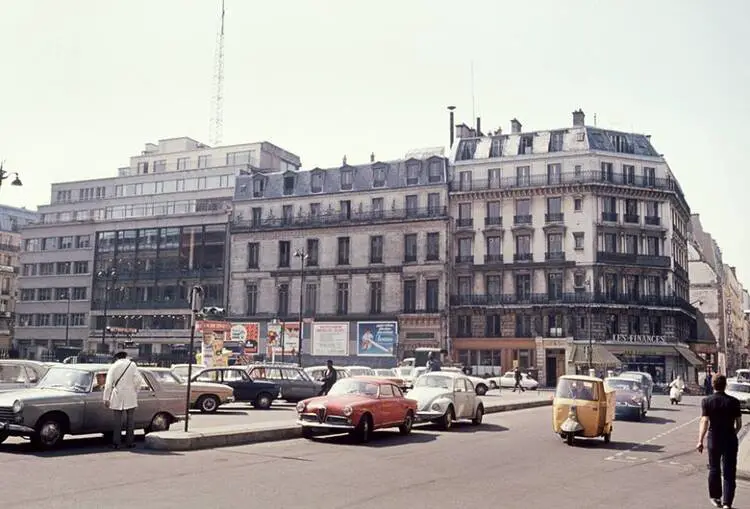
Back then, cars filled the space around the old stock exchange building.
After trading moved to the business district La Défense in 1998, the city slowly started changing the area.
By 2025, it will become a leafy plaza with no cars driving through it.
Palais Royal, 1980
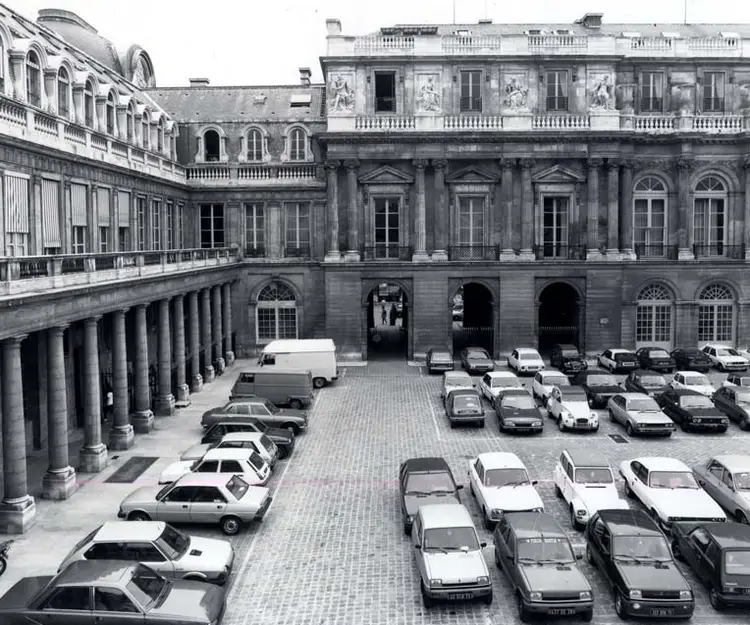
The courtyard of this historic building was used as a parking lot.
But in 1985, artist Daniel Buren designed the striped columns you can still see today.
Since then, the area has been for people, not cars.
Notre-Dame, 1960
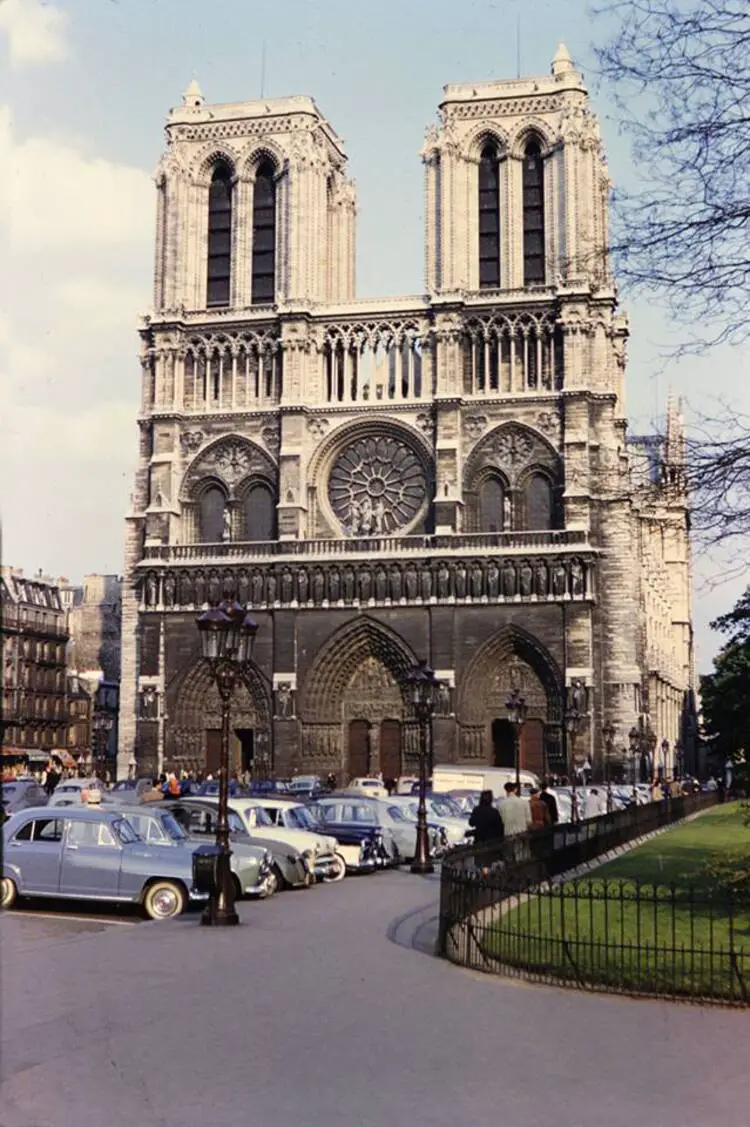
The big square in front of Notre-Dame used to be a car park.
But during the 1970s, the city made big changes while building the underground RER train system.
Today, that space is only for people walking.
It will soon have a new underground visitor area too, opening in 2027.
Notre-Dame, 1962
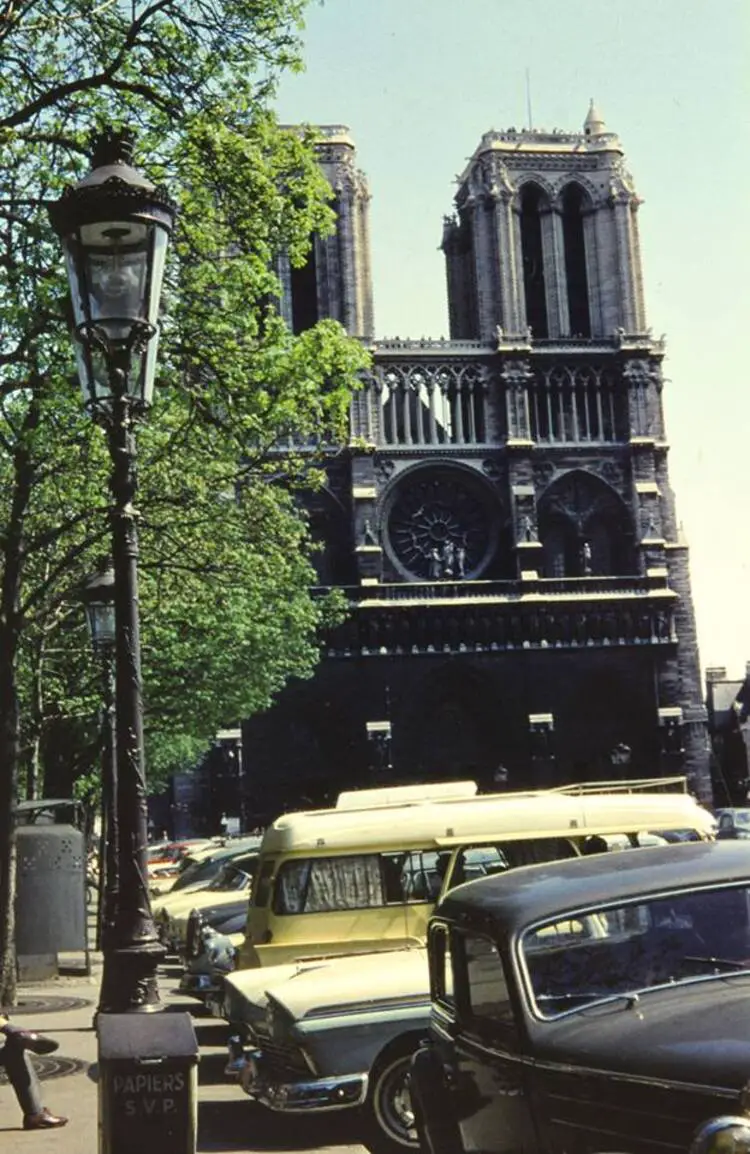

With a passion for travel and having visited over 50 countries, Dorian is eager to share his favorite spots and expert tips to help you explore Paris and France like a local.



